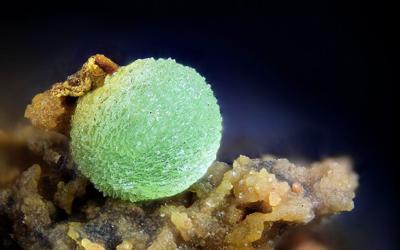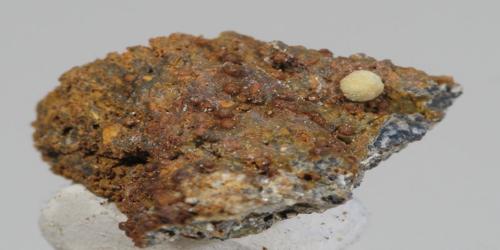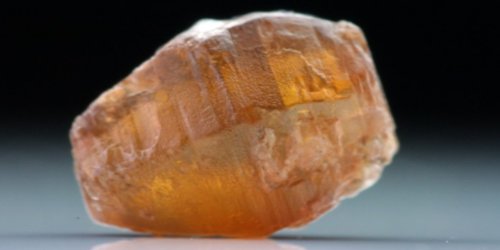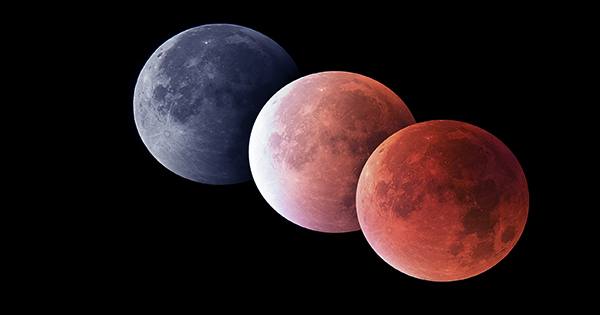Kolbeckite (scandium phosphate dihydrate) is a mineral with formula: ScPO4·2H2O. It is a mineral consisting of a hydrous silicate and phosphate of beryllium, aluminum, and calcium. It was discovered originally at Schmiedeberg, Saxony, Germany in 1926 and is named after Friedrich L. W. Kolbeck, a German mineralogist.
Kolbeckite is usually found as small clusters of crystals associated with other phosphate minerals.
General Information
- Category: Phosphate minerals
- Formula: ScPO42H2O
- Crystal system: Monoclinic
- Crystal class: Prismatic (2/m)
- Streak: white.

Fig: Kolbeckite
Properties
- Luster: Vitreous, Pearly
- Transparency: Transparent
- Color: Colorless, light yellow; when impure: cyan-blue, blue-gray, apple-green
- Hardness: 3 – 5 on the Mohs scale
- Tenacity: Brittle
- Cleavage: Distinct/Good On {010}, distinct, on {100} and {001}, poor.
- Fracture: Conchoidal
- Density: 2.36 g/cm3 (Measured) and 2.35 g/cm3 (Calculated)
Occurrence:
Kolbeckite is a rare mineral that occurs in localities in Germany, Romania, Austria, the United States, India, Russia, and Australia. It is a secondary mineral that occurs in hydrothermal metallic veins and some phosphate deposits.
Information Source:
















